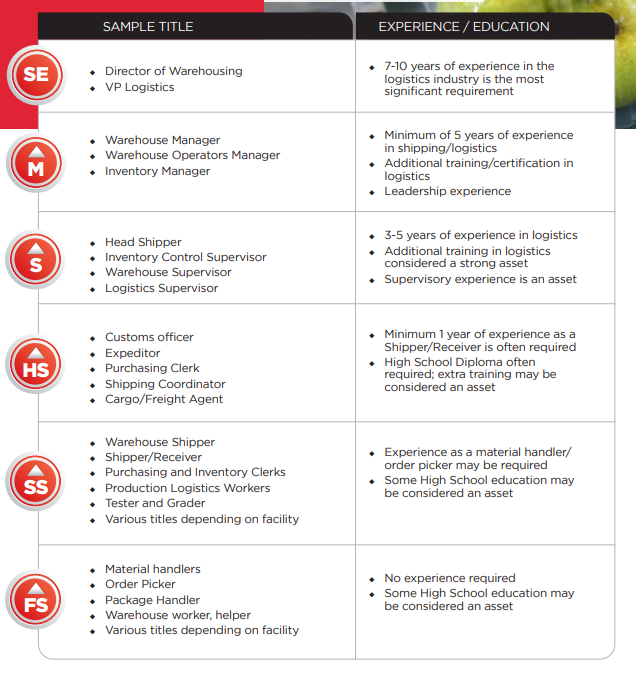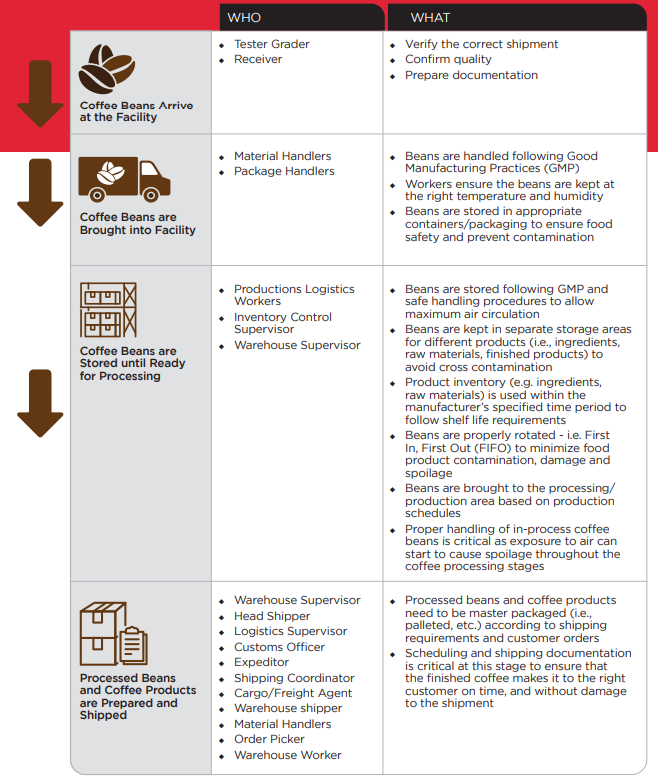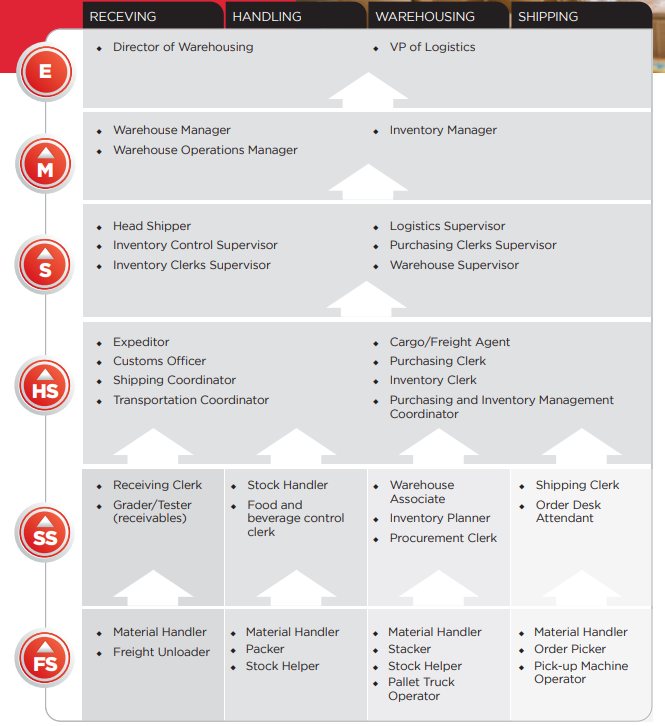
Canada’s Agri-Food sector is a significant contributor to our nation’s economy and was recently identified as one of Canada’s top growth industries over the next 10 years. Despite this, the sector continues to face a critical labour shortage that, if left unresolved, will impede the industry’s growth, employment opportunities, and overall sustainability.
To address this shortage, Food Processing Skills Canada (FPSC) has embarked upon a landmark Labour Market Information Study (LMI). In its finality, the LMI will provide government and decision-makers with the research needed to make regulatory changes that will bring both prosperity and opportunity to the sector.
Understanding Your Career Pathway in Logistics lays crucial groundwork for the LMI by defining occupations and career pathways in the logistics function of food and beverage processing. Utilizing this data, the LMI will take in-depth reviews of each career pathway and their specific challenges and opportunities.
This document provides practical information about the career paths available for workers in logistics in the food and beverage processing industry. In a time when attraction and recruitment of workers is important to keep up with demand, the career pathway can be helpful to educate potential workers about the opportunities and career pathways within the area of logistics. The career pathway is a helpful tool for employers to attract, recruit, and retain productive and skilled workers.
To learn more about the career pathways in logistics in food and beverage processing, we conducted extensive research to learn about the various job positions and skill levels, including collecting and analyzing job descriptions, job advertisements, organizational charts, and other occupational information from a variety of food and beverage processing facilities.
Our research helped to identify key factors that are unique to the logistics function of the food and beverage processing industry:
Proper receiving, handling, storage, and shipping are important aspects of the food safety management program to prevent the risk of biological, chemical, or physical hazards. The management of inbound and outbound ingredients, materials, and products is crucial to ensure food safety and traceability within a food and beverage processing facility. All members of the logistics and warehousing team play an important role in ensuring the production of safe, high-quality food products.
Overall, logistics can be separated into two main processes – inbound and outbound. Inbound logistics includes receiving, unloading, and storing ingredients and materials that make up the inventory of the facility. Outbound logistics includes the packing and shipping of goods and products that are produced by the facility. Logistics is a very complex and ongoing process within a food and beverage processing facility, and it is very cyclical in nature.
Some facilities, particularly large processors, have their own logistics and transportation departments. In these cases, the dispatching, scheduling, and transport of products is handled in-house. Other facilities may store their finished product on-site (i.e., warehousing), but the actual transportation logistics (including customs, scheduling, dispatching, and transporting) is contracted out to a third-party provider. In addition, facilities may only have short-term storage on-site; in this case, transportation services (in-house or hired) transport product to facilities for long-term storage or warehousing.
The career pathway for logistics in the food and beverage industry illustrates the progression of occupational levels from foundational skills to executive management. The career pathway is comprised of six (6) levels. The typical entry-point into logistics is at the Foundational Skill Level. With work experience and training (often offered on-the-job), workers can progress upward on the career pathway within the logistics department, which can include receiving, handling/warehousing, and shipping. This resource illustrates the potential progression of workers within and across the defined steps of the logistics function within a food and beverage processing facility.
Foundational Skill Level positions are often entry-level roles or jobs that require no prior experience or training to work in a dairy facility. While a high school diploma or equivalent may be preferred, it is not typically required by most businesses. Training for foundational skill level jobs most often occurs on the job, and job shadowing is an important component of this training.
Semi Skill Level workers typically have 6 months to 1 year of experience working in logistics. A high school diploma is often preferred but may not be required. Workers in this job class typically receive training on the job and may also receive Workplace Hazardous Materials Information System (WHMIS), food safety, and food safety management system training, such as Hazardous Analysis Critical Control Point (HACCP). Workers who start in Foundational Skill Level positions often progress into Semi Skill Level positions as they gain additional experience and training.
High Skill Level Workers typically have at least 1 year of experience (typically 1-3 years) in logistics and are familiar with all stages of the logistics process. A high school diploma is an asset. Additional training related to supervising workers may be provided in-house or acquired through continuous learning. Workers in Semi Skill Level positions often advance to High Skill Level positions as they gain additional experience and training.
Supervisory Skill Level workers typically have 2-3 years of experience in logistics. Additional training in logistics, scheduling and coordination, supervision, and employee management may be required and provided by the company. A high school diploma or equivalent is often required, with additional post-secondary education being an asset. It is typical for supervisors to start at the Foundational Skill Level and advance to supervisory roles through experience and additional training. Supervisors are often required to complete WHMIS, food safety, and food safety management system training.
Management Skill Level workers typically have a minimum of 5 years of supervisory experience in logistics. Leadership experience is considered an asset. A post-secondary education may be required or considered a strong asset. Additional training in management is often required of job incumbents. Managers often require WHMIS, food safety, and food safety management system training.
Senior Executive Leadership Skill Level workers typically have extensive experience, such as 7-10+ years, within logistics in the food and beverage processing industry or related sectors. They are responsible for managing corporate affairs and guiding the strategic direction and vision of the organization. Skills in organizational management and business administration are critical for these roles.
| Step | Key Tasks and Responsibilities |
|---|---|
| Receiving |
Arrival:
|
| Step | Key Tasks and Responsibilities |
|---|---|
| Receiving |
Arrival:
|
| Handling |
|
| Warehousing/Storage |
|
| Shipping |
Inspection:
|

Manage Inventory:
Handle Inventory:
Manage Warehouse:
Manage Transportation:


NOC 90010 – Manufacturing Manager
NOC 90010 – Manufacturing Manager NOC 70012 – Facility Operation and Maintenance Manager
NOC 12013 – Supervisors, Supply Chain, Tracking, and Scheduling Coordination Occupations
NOC 13200 – Customs, Ship and Other Brokers
NOC 13201 – Production and Transportation Logistics Coordinators
NOC 12102 – Procurement and Purchasing Agents/Officers
NOC 75101 – Material Handlers
NOC 65102 – Store Shelf Stockers, Clerks, and Order Fillers
NOC 94143 – Testers and Graders, Food and Beverage Processing
NOC 14402 – Production Logistics Workers
NOC 14403 – Purchasing and Inventory Control Workers
NOC 14400 – Shippers and Receivers